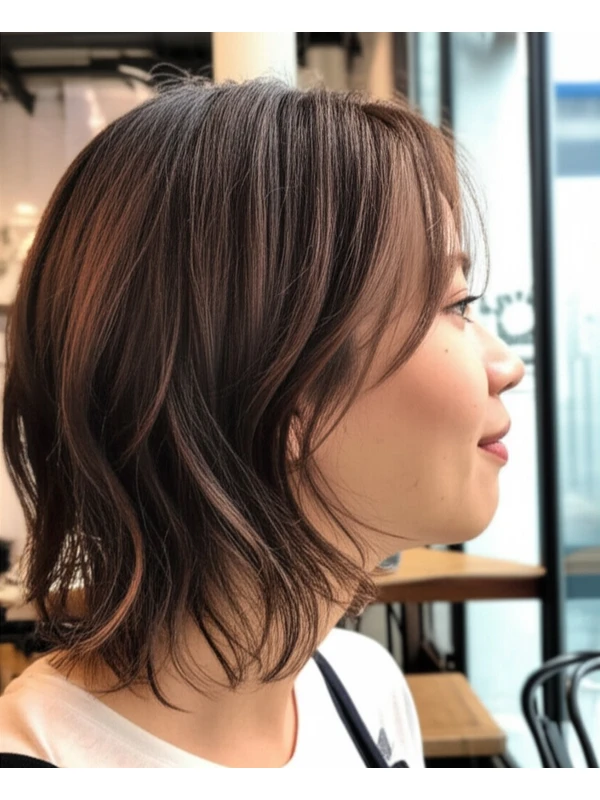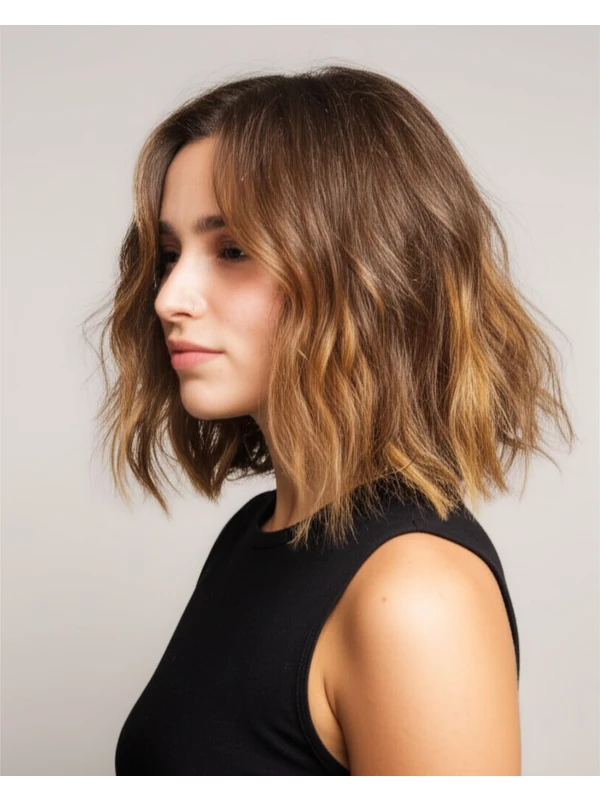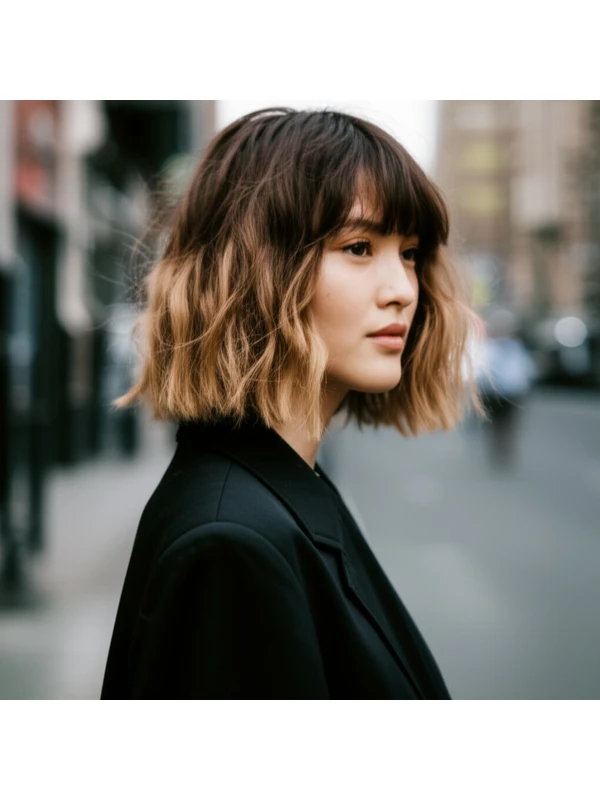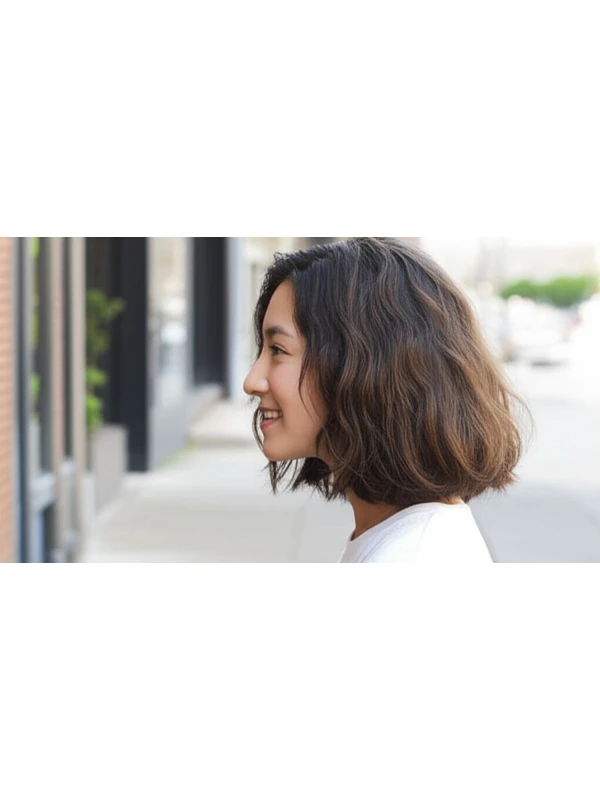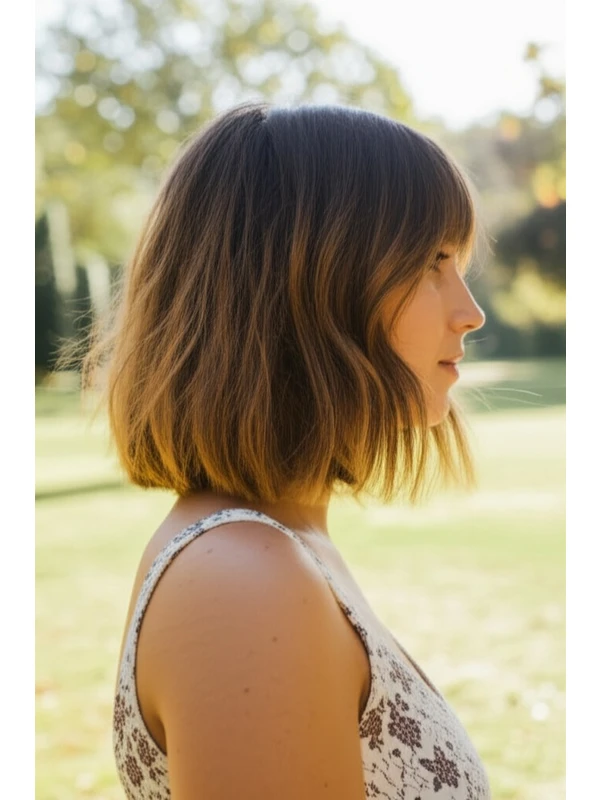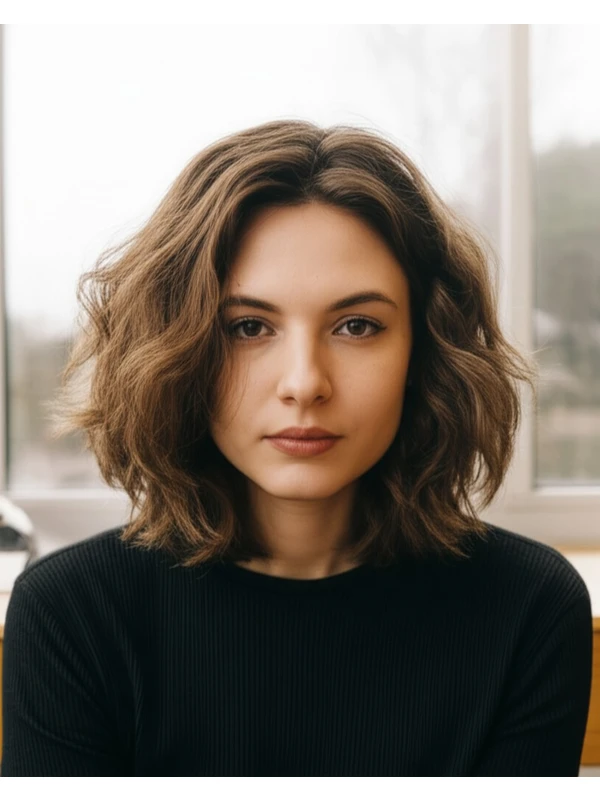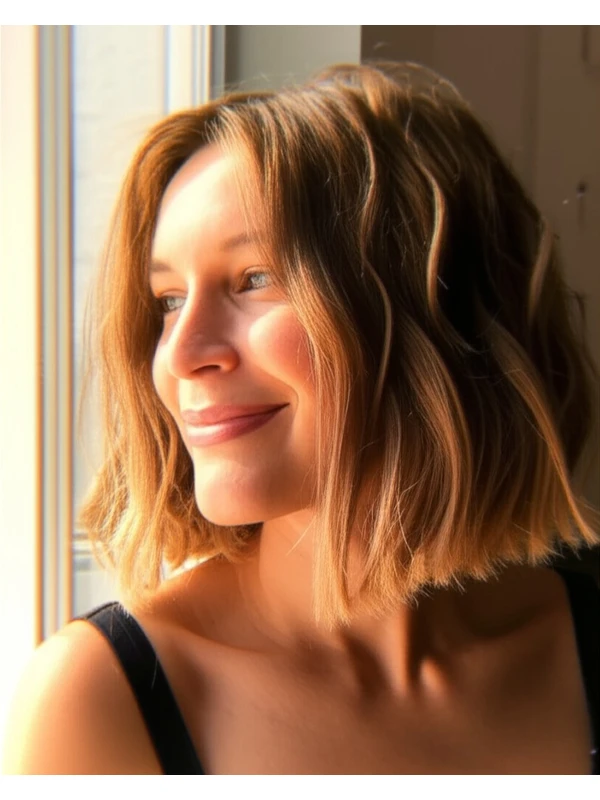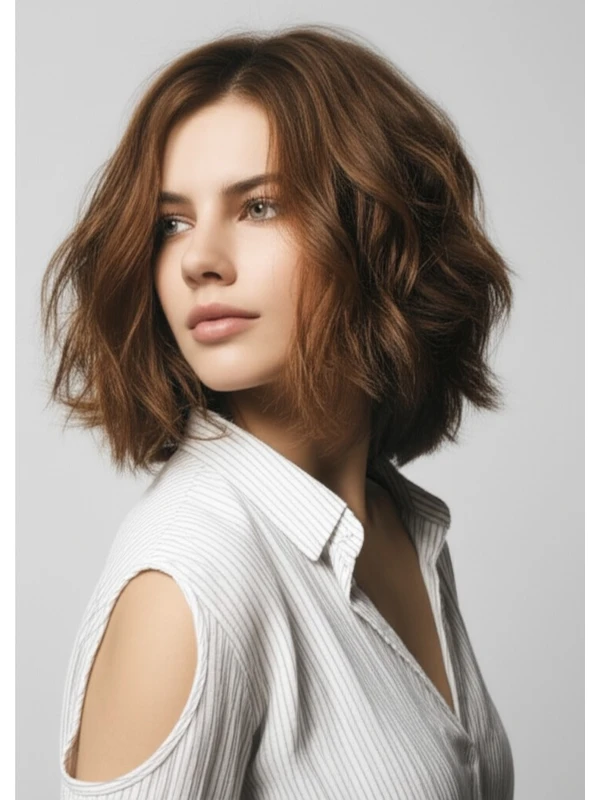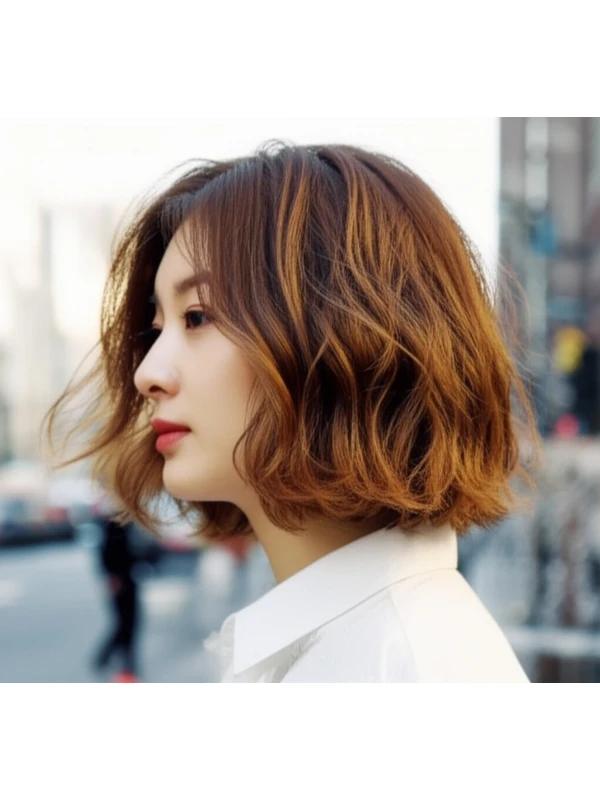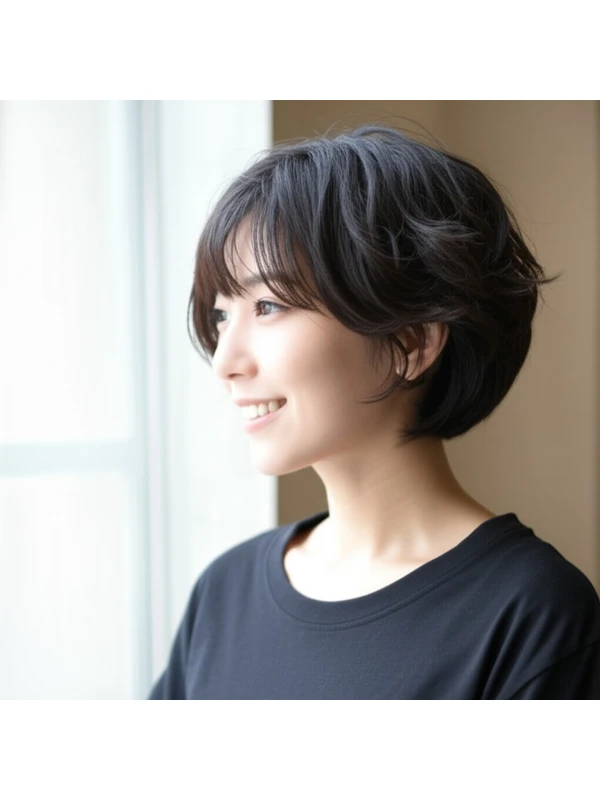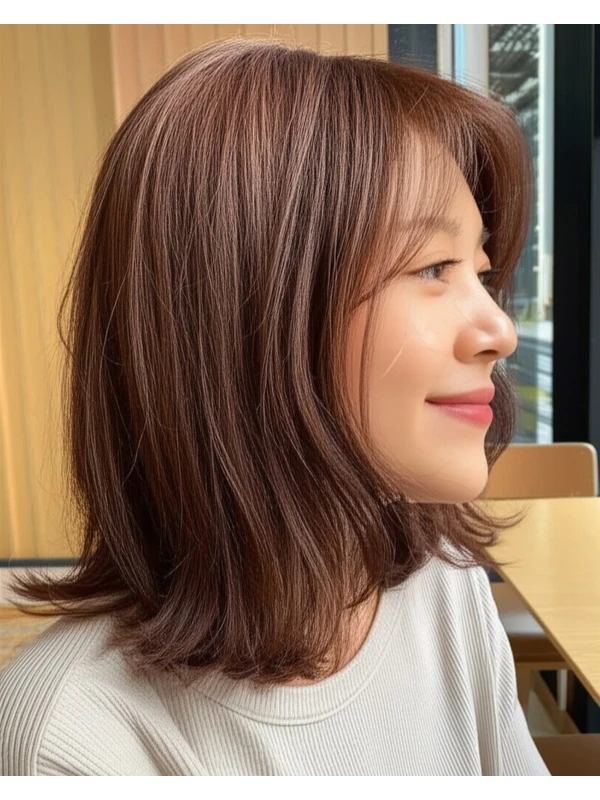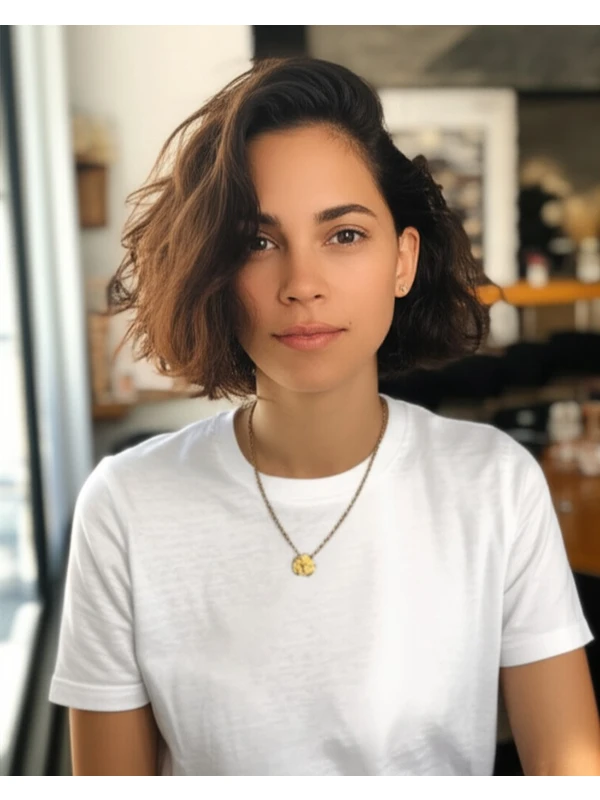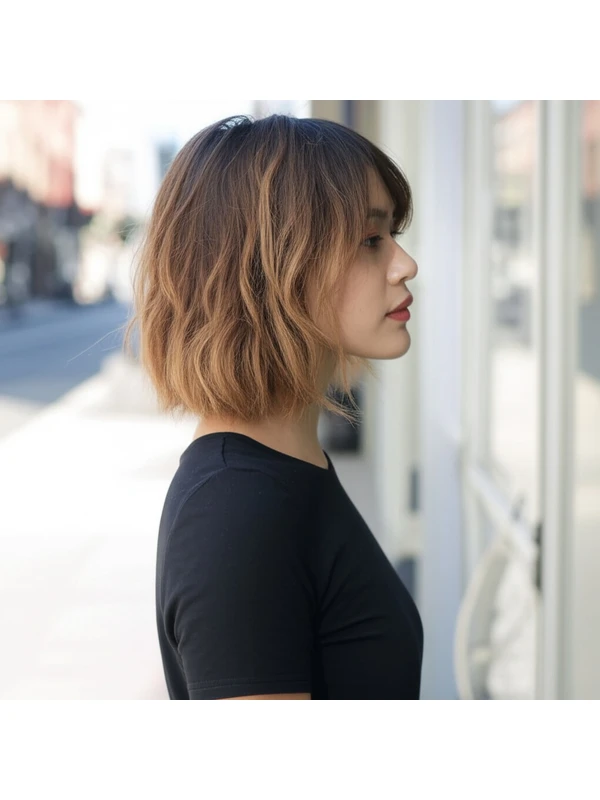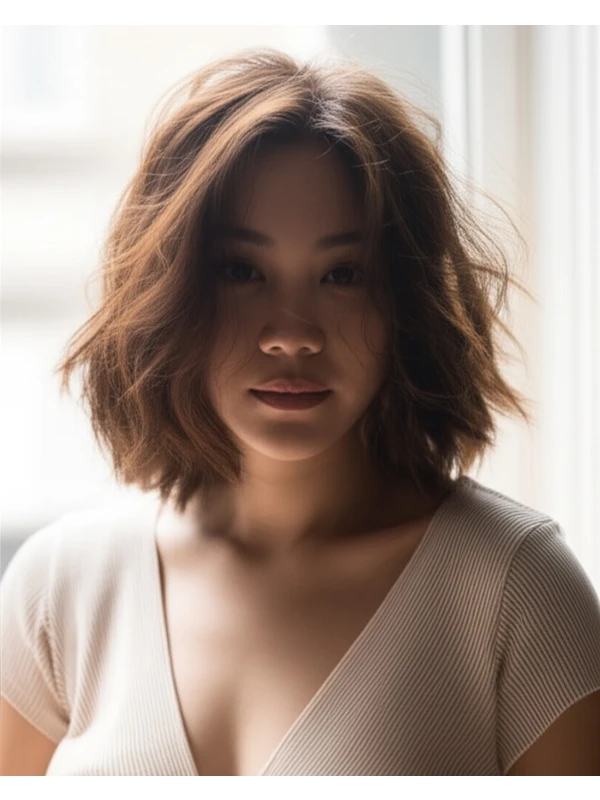#The One-Length Hairstyle: Effortless Elegance for Every You
The "one length" hairstyle is having a moment – and for good reason! It’s versatile, flattering on many face shapes, and surprisingly easy to style (or not style!) depending on your mood. But what exactly is one length? Let's dive into everything you need to know.
#1) Background & Definition: The Geometry of Simplicity
The one-length hairstyle, as the name suggests, is characterized by hair that’s roughly the same length all around the head. Think of it like a curtain – even layers falling uniformly. It's a classic cut with roots in many cultures and eras.
- Cut Geometry: The focus is on creating an overall uniform shape rather than heavily layered or sculpted sections. Layers, if any, are subtle and blended to maintain the one-length appearance.
- Key Features: Even perimeter, minimal layering (or soft blending), often blunt ends (though softer edges are possible).
- Typical Length Ranges: Can be worn anywhere from collarbone length to shoulder length or longer. Bob lengths (chin to jaw) also work beautifully as one-length styles.
- Alternative Names: Blunt cut, curtain style (when parted in the middle), classic bob (if shorter).
#2) Face Shape Fit: Finding Your Flattering Angle
One-length cuts are surprisingly adaptable! Here’s how they can complement different face shapes and potential fringe options:
- Oval Faces: Lucky you! Almost any one-length style will work. Experiment with length to find what feels most comfortable and stylish. A side part adds asymmetry and interest.
- Round Faces: One length helps elongate a round face, especially when cut slightly longer than the jawline. Avoid chin-length bobs as they can accentuate roundness. A deep side part is your friend! Soft, wispy bangs can also soften features.
- Square Faces: The softness of a one-length style softens angularity. A middle part balances symmetry. Consider slightly rounded edges instead of blunt lines for extra softening. Avoid heavy, straight-across bangs which can emphasize the squareness.
- Heart Faces: A one-length cut with subtle layers around the cheekbones helps balance a wider forehead and pointed chin. Chin-length or longer styles work well. Side-swept bangs are flattering.
- Diamond Faces: One length emphasizes your best features – strong cheekbones! A middle part shows off symmetry. A long, face-framing fringe can soften the angles.
- Oblong (Long) Faces: Add width with a one-length style that hits at or just below the shoulders. Avoid very long hair as it will only elongate your face further. Consider adding subtle layers to create volume around the sides.
#3) Body Proportions & Height Guidance: Tailoring Your Silhouette
Your height and body proportions influence how a one-length cut looks on you. Here’s how to adjust length and volume placement:
- Petite: Shoulder-length or slightly shorter is often most flattering, avoiding overwhelming the frame.
- Average: Most lengths work well – experiment!
- Tall: Longer lengths (past the shoulders) create a more balanced silhouette.
- Narrow Shoulders: Add volume at the sides with subtle layers to visually broaden your shoulders.
- Broad Shoulders: Avoid adding too much volume at the shoulder line; keep it streamlined and sleek.
- Short Neck: Shoulder-length or longer helps elongate the neck. Avoid chin-length bobs that can make a short neck appear even shorter.
- Long Neck: A one length cut just below the collarbone is often very flattering, as it provides visual balance to a long neck.
#4) Works Best With Hair Types & Densities: Embracing Your Texture
One-length styles are adaptable across hair types and densities, but adjustments are needed!
- Straight: Looks sleek and polished. Blunt ends create a crisp line.
- Wavy: The natural wave adds movement and texture. Consider point cutting the ends to soften them.
- Curly/Coily: One length showcases curl pattern beautifully, but shrinkage is key! Discuss desired stretched length with your stylist (see density tips below).
- Fine Hair: Can look flat without volume. Subtle layering can add lift at the roots.
- Medium Hair: Versatile and easy to style.
- Thick Hair: May require more thinning to remove bulk, but avoid over-thinning which can lead to frizz.
Density Tips:
- Shrinkage (Curls/Coils): Curly and coily hair shrinks significantly when dry! Communicate your desired stretched length to your stylist. A cut that looks chin-length wet may end up much shorter dry.
- Fine Hair & Volume: Ask for a root lift technique during the haircut or consider texturizing sprays at home.
#5) Styling Variations: From Casual Cool to Evening Elegance
One-length offers endless styling possibilities!
- Sleek vs. Textured: Sleek styles are achieved with smoothing serums and flat irons. Textured looks involve air drying, twisting sections, or using texturizing sprays.
- Middle vs. Side Part: A middle part creates symmetry; a side part adds softness and asymmetry.
- Fringe Variations: Curtain bangs, wispy bangs, blunt bangs – all can work with one-length cuts (consider your face shape!).
- Occasion Styling:
- Casual: Air dry or loosely wave the hair.
- Office: Sleek and straight for a polished look.
- Evening: Add volume at the roots, create soft waves, or pin back sections for an updo.
#6) Maintenance: Keeping Your Shape Sharp
- Trim Cadence: Every 6-8 weeks to maintain shape and prevent split ends. Curly/coily hair may need more frequent trims (every 4-6 weeks).
- At-Home Routine: Gentle shampoo & conditioner, weekly deep conditioning mask (especially for dry or damaged hair).
- Heat vs. Air Dry: Minimize heat styling to protect hair health. When using heat, always use a heat protectant!
- Product Checklist:
- Shampoo and Conditioner: Tailored to your hair type.
- Leave-in Conditioner: For moisture and detangling (especially important for curly/coily hair).
- Styler: Smoothing serum, texturizing spray, mousse – depending on desired look.
- Finishing Product: Hair oil or shine spray.
- Estimated Daily Styling Time: 5–20 minutes, depending on styling complexity and hair type.
#7) Grow-Out Roadmap: The Evolution of Your Style
- Months 1-3: The cut looks its best – uniform length and shape.
- Months 3-6: Notice the ends starting to lose their sharpness. Subtle layering may become more apparent as hair grows longer. Maintain shape with regular trims.
- Maintaining Shape: Between cuts, use a small amount of styling product to smooth flyaways and keep the edges looking neat.
#8) Color Pairings: Enhancing Your Look
- Shades that Elevate: Rich browns, caramel highlights, cool-toned blondes – all complement one-length styles.
- Cool vs. Warm Undertones: Consider your skin’s undertone when choosing a color. Cool tones (ashy/platinum) work well with cooler skin; warm tones (golden/honey) flatter warmer skin.
- Low Commitment Options: Balayage or root shadowing can add dimension without a full, all-over color change.
#9) Season & Occasion Guide: Adapting to the Moment
- Spring/Summer: Lighter colors and effortless styling (air drying, beach waves).
- Fall/Winter: Richer tones and more polished looks (sleek styles, updos for special events).
- Work: A sleek, professional style.
- Weddings/Parties: Soft curls or a half-updo to show off your face.
#10) Cost & Time: Salon Expectations
- Salon Time: Typically 45–90 minutes for the initial cut.
- Price Range: Expect to pay in the moderate range, depending on location and stylist experience. Follow-up trims will be quicker (30–60 minutes).
#11) Pros & Cons: Weighing Your Options
Pros:
- Easy to style (or not!)
- Flattering on many face shapes
- Timeless and classic look
- Versatile for various occasions
Cons:
- Can appear flat if not styled correctly.
- Requires regular trims to maintain shape.
- May need adjustments based on hair texture & density.
#12) Salon Consultation Script: Your Questions, Answered
Here are some questions you can bring up during your salon consultation:
- "I'm interested in a one-length haircut. Can you assess my face shape and recommend the best length for me?"
- “How will this cut work with my hair texture? What styling techniques do you suggest?”
- "Can we incorporate subtle layers to add volume/soften angles?"
- “I want to maintain a low-maintenance style. How often should I get trims?”
- "What products would you recommend for my hair type and this hairstyle?"
#FAQs: Your Burning Questions
- Is one length good for all hair lengths? While versatile, extremely long hair (past the mid-back) may lose its impact as a true one-length style. Shorter to shoulder-length works best.
- Can I do this at home? A skilled stylist can create the precise shape and blend layers effectively. DIY attempts are possible for simpler cuts, but professional results are often worth it.
- Will my hair look flat with a one-length cut? Not necessarily! Strategic layering or volume-boosting techniques can prevent flatness.
- How do I avoid split ends? Regular trims (every 6–8 weeks), heat protection when styling, and deep conditioning treatments are essential.
- Can I add bangs to a one-length style? Absolutely! Curtain bangs, side-swept bangs, or even blunt bangs can be incorporated depending on your face shape and desired look.
- What if my hair is unevenly dense? Your stylist can thin out thicker sections and suggest styling techniques to create balance.
